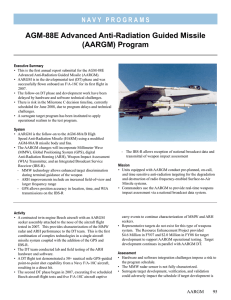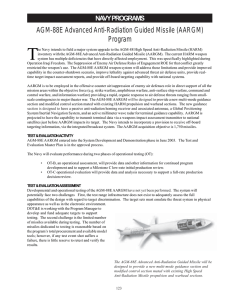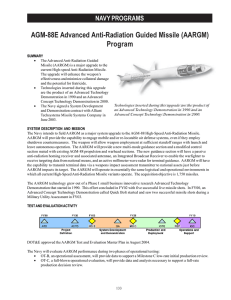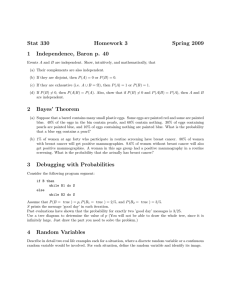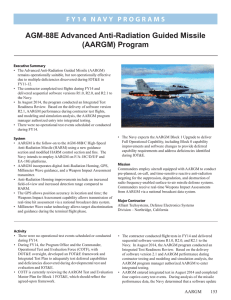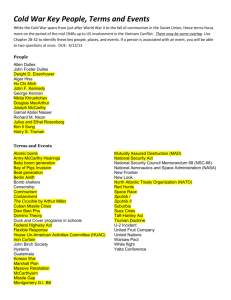AGM-88E Advanced Anti-Radiation Guided Missile (AARGM) Program
advertisement
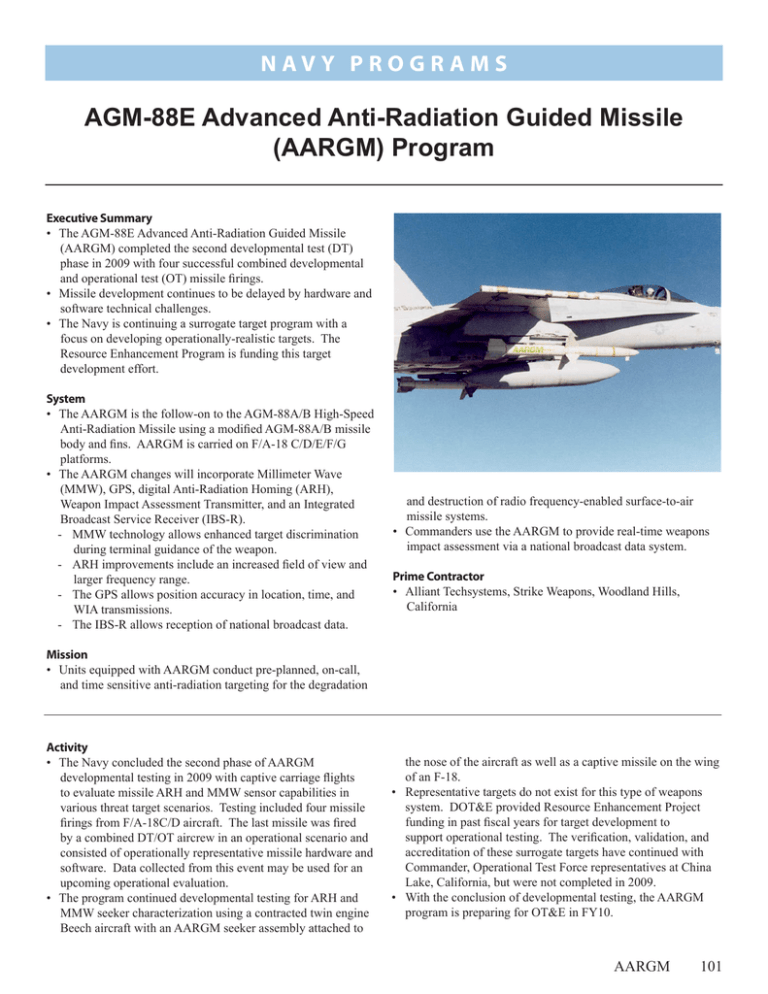
N a v y P ROGRA M S AGM-88E Advanced Anti-Radiation Guided Missile (AARGM) Program Executive Summary • The AGM-88E Advanced Anti-Radiation Guided Missile (AARGM) completed the second developmental test (DT) phase in 2009 with four successful combined developmental and operational test (OT) missile firings. • Missile development continues to be delayed by hardware and software technical challenges. • The Navy is continuing a surrogate target program with a focus on developing operationally-realistic targets. The Resource Enhancement Program is funding this target development effort. System • The AARGM is the follow-on to the AGM-88A/B High‑Speed Anti-Radiation Missile using a modified AGM‑88A/B missile body and fins. AARGM is carried on F/A-18 C/D/E/F/G platforms. • The AARGM changes will incorporate Millimeter Wave (MMW), GPS, digital Anti-Radiation Homing (ARH), Weapon Impact Assessment Transmitter, and an Integrated Broadcast Service Receiver (IBS-R). - MMW technology allows enhanced target discrimination during terminal guidance of the weapon. - ARH improvements include an increased field of view and larger frequency range. - The GPS allows position accuracy in location, time, and WIA transmissions. - The IBS-R allows reception of national broadcast data. and destruction of radio frequency-enabled surface-to-air missile systems. • Commanders use the AARGM to provide real-time weapons impact assessment via a national broadcast data system. Prime Contractor • Alliant Techsystems, Strike Weapons, Woodland Hills, California Mission • Units equipped with AARGM conduct pre-planned, on-call, and time sensitive anti-radiation targeting for the degradation Activity • The Navy concluded the second phase of AARGM developmental testing in 2009 with captive carriage flights to evaluate missile ARH and MMW sensor capabilities in various threat target scenarios. Testing included four missile firings from F/A-18C/D aircraft. The last missile was fired by a combined DT/OT aircrew in an operational scenario and consisted of operationally representative missile hardware and software. Data collected from this event may be used for an upcoming operational evaluation. • The program continued developmental testing for ARH and MMW seeker characterization using a contracted twin engine Beech aircraft with an AARGM seeker assembly attached to the nose of the aircraft as well as a captive missile on the wing of an F-18. • Representative targets do not exist for this type of weapons system. DOT&E provided Resource Enhancement Project funding in past fiscal years for target development to support operational testing. The verification, validation, and accreditation of these surrogate targets have continued with Commander, Operational Test Force representatives at China Lake, California, but were not completed in 2009. • With the conclusion of developmental testing, the AARGM program is preparing for OT&E in FY10. AARGM 101 N a v y P ROGRA M S Assessment • The total of eight live firings in the second phase of developmental testing (one missile in FY07, three missiles in FY08, and four missiles in FY09) have not demonstrated sufficient characterization of the missile system prior to entering operational evaluation. • The surrogate targets have not been fully characterized. Continued delays in completing this task may result in risk to the program schedule. • The ARH and MMW radars are better characterized, but there remains a known shortcoming to these sensor systems resulting in the Key Performance Parameter Three target being deferred to FOT&E in FY11. • Software development challenges continue to pose a risk to the program schedule. Software maturity and the resulting impact to reliability is the key concern. The Program Office has identified the deficiencies and is working toward correction of deficiencies with the DT and OT community. 102 AARGM • Because of the software deficiencies and development delays in the ARH and MMW systems, the program has delayed entry into OT&E for four months until January 2010. Recommendations • Status of Previous Recommendations. The Navy did not satisfactorily address the FY08 recommendations. • FY09 Recommendations. 1. The Operational Test Agency, after receiving the verification and validation reports, must ensure that the surrogate targets are accredited before formal operational testing is performed on each representative target type. This may be done sequentially as the accreditation progresses from target type to type. 2. The Navy must fully characterize the MMW and ARH sensors in developmental test prior to formal OT to ensure the OT is a period of confirmation vice discovery.
